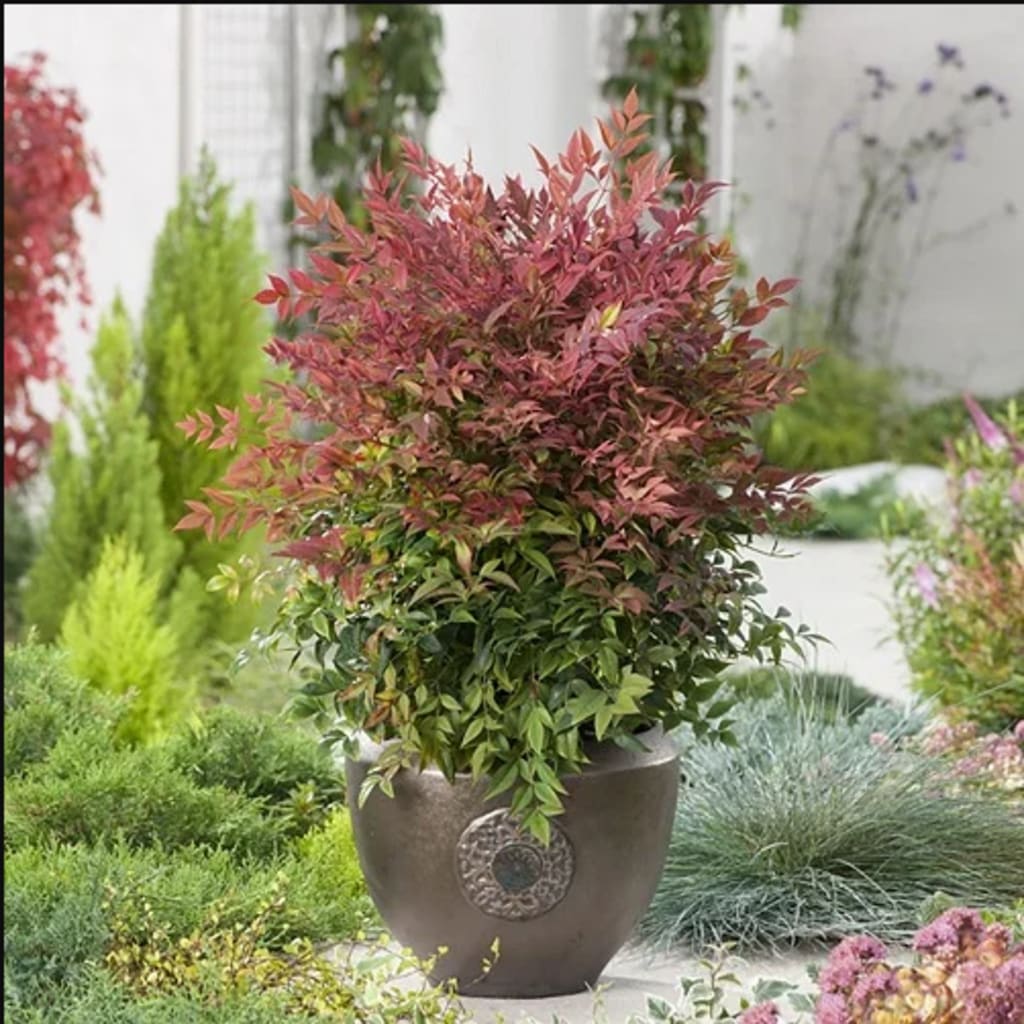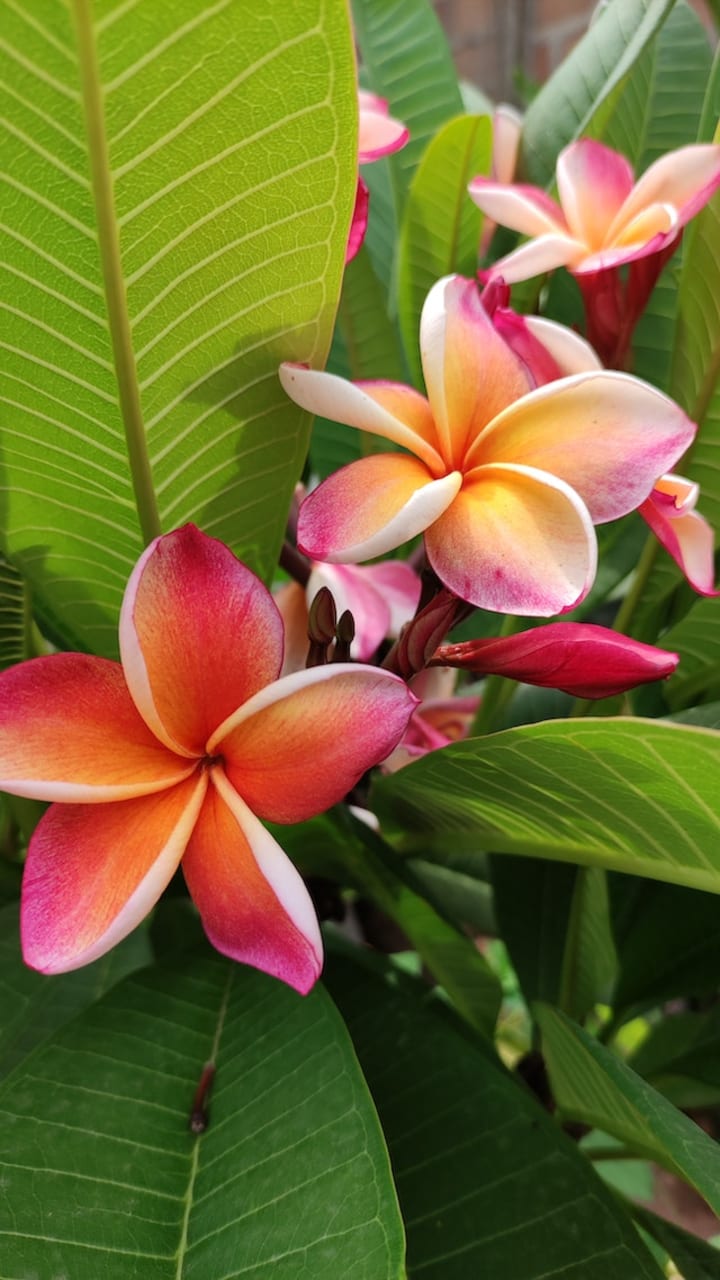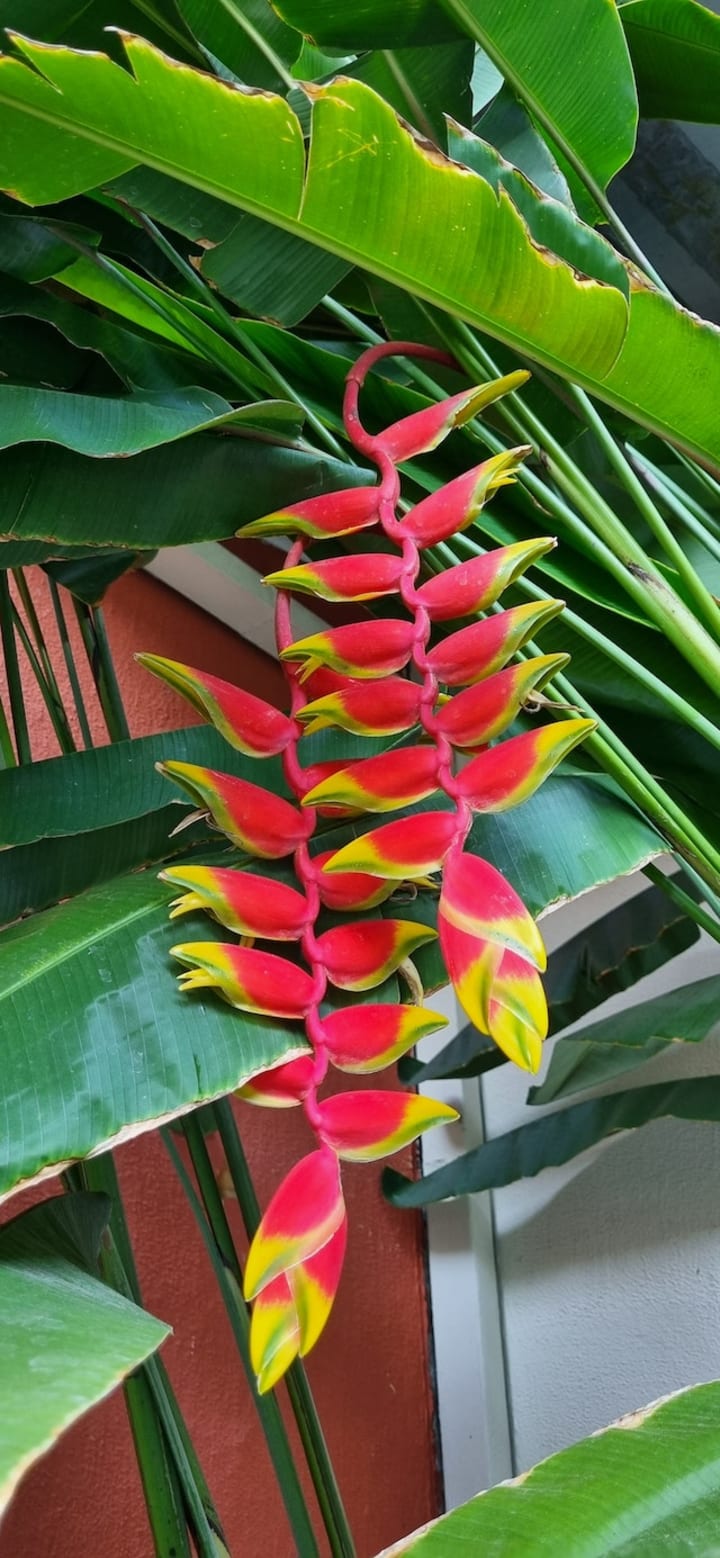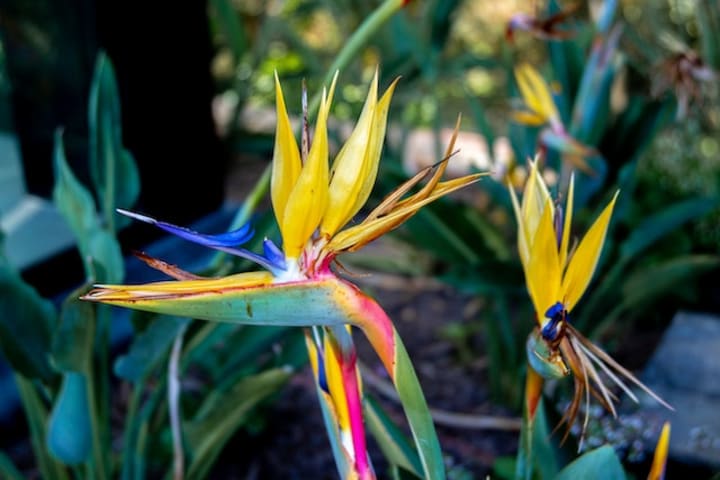
1. Plumeria
Plumeria, a botanical gem also known as Frangipani, is a breathtaking flowering plant renowned for its captivating beauty and enchanting fragrance. This tropical and subtropical genus belongs to the Apocynaceae family and comprises more than 300 species, each offering a unique twist on nature’s artistry.
Plumeria’s exquisite flowers are the centerpiece of its allure. These blossoms are nothing short of nature’s masterpieces, adorning the plant’s branches with their stunning arrays of colors and shapes. Plumeria flowers can range from pure white and vibrant yellows to deep pinks and fiery reds, with some varieties even blending multiple hues in a single bloom. Their petals are often delicately brushed with contrasting shades, creating a visual symphony that’s a feast for the eyes.
Beyond their visual splendor, Plumeria flowers emit an irresistible fragrance that can transport you to a tropical paradise. The scent is often described as a sweet, fruity aroma with subtle hints of jasmine and citrus. This intoxicating perfume not only enhances the aesthetics of gardens and landscapes but also makes Plumeria a sought-after addition to tropical gardens, where it plays a vital role in traditional cultural ceremonies and rituals.
Caring for Plumeria can be a rewarding experience. These plants thrive in warm climates with plenty of sunlight, making them popular choices for gardens in regions like Mexico, Central America, the Caribbean, and the Pacific Islands. While they require well-draining soil and periodic watering, Plumeria’s appeal lies in its relatively low maintenance requirements.
Plumeria’s significance extends beyond its aesthetics and ease of care. It holds cultural importance in many parts of the world. In Hawaiian culture, for instance, Plumeria flowers are often used to make leis, symbolizing love and friendship. Similarly, in other tropical regions, Plumeria is associated with positivity, immortality, and the embodiment of natural beauty.
In conclusion, Plumeria is a captivating botanical wonder that enchants the senses with its striking flowers and alluring fragrance. Its cultural significance and ease of care make it a cherished addition to gardens and landscapes, ensuring that this exotic beauty continues to be celebrated worldwide.

2. Heliconia
Heliconia, often referred to as the “lobster-claw” or “parrot’s beak” plant, is a stunning and exotic tropical genus that belongs to the family Heliconiaceae. With over 194 known species, this plant group is celebrated for its flamboyant, bird-of-paradise-like flowers and lush foliage, making it a prominent feature in tropical landscapes around the world.
The defining characteristic of Heliconia is its remarkable inflorescence, which consists of colorful bracts that resemble the beak of a parrot or the claw of a lobster. These bracts come in a wide range of vivid hues, including fiery reds, vibrant yellows, deep oranges, and lush greens, often accentuated by contrasting patterns and shades. The true flowers, small and inconspicuous, are nestled within these striking bracts.
Heliconias are predominantly found in tropical regions, thriving in warm and humid climates with ample rainfall. Their long and sturdy stems can reach impressive heights, with some species growing up to 30 feet (9 meters). The leaves are typically large, banana-like, and leathery, adding to the plant’s overall tropical allure.
These remarkable plants are not only ornamental but also play ecological roles in their native habitats. They provide shelter and nectar for various birds, insects, and even bats, facilitating pollination. In addition to their ecological significance, Heliconias are also used in traditional medicine in some cultures.
Cultivating Heliconia requires attention to their specific needs. They thrive in well-drained, rich soil and demand consistent moisture. Adequate sunlight, preferably filtered or partial shade, is essential for their growth. While Heliconias are known for their resilience, they may require protection from strong winds and heavy rains to prevent damage to their delicate inflorescences.
Due to their striking appearance, Heliconias are popular in tropical gardens, resorts, and botanical collections. They bring an exotic and vibrant aesthetic to landscapes, making them a favorite among horticulturists, florists, and enthusiasts of tropical flora.
In conclusion, Heliconia is a captivating tropical plant genus cherished for its flamboyant and colorful bracts, reminiscent of lobster claws or parrot beaks. These plants, rich in diversity and ecological importance, add a touch of exotic beauty to tropical landscapes and continue to captivate the hearts of those who encounter them.

3. Birds of Paradise
Birds of Paradise, scientifically known as the Paradisaeidae family, encompass a group of remarkably stunning and unique birds renowned for their extravagant plumage and striking courtship displays. These avian wonders are primarily found in the lush rainforests, coastal regions, and islands of Southeast Asia, Papua New Guinea, and eastern Australia, making them iconic representatives of tropical biodiversity.
The name “Bird of Paradise” aptly captures their exceptional appearance. These birds boast a diverse array of vibrant colors, intricate patterns, and remarkably long, decorative feathers that resemble outlandish plumage. The males, in particular, exhibit an impressive visual spectacle during courtship rituals, using their extraordinary feathers to attract potential mates. Some species even sport iridescent hues, adding to their otherworldly allure.
Birds of Paradise are known for their elaborate courtship displays, which vary from species to species but often involve intricate dances, vocalizations, and the showcasing of their vibrant plumage. These performances are not only mesmerizing but also serve as critical mechanisms for attracting mates and ensuring the continuation of their species.
One of the most iconic species within this family is the Greater Bird of Paradise, known for its striking emerald-green plumage, intricate fan-shaped tail feathers, and vibrant yellow accents. The Wilson’s Bird of Paradise, on the other hand, is famous for its vibrant turquoise body and intricate feather patterns.
The natural habitats of Birds of Paradise, lush rainforests and dense jungles, provide them with ample insects, fruits, and other food sources. They primarily feed on fruits and insects, contributing to the ecological balance of their ecosystems by aiding in seed dispersal.
Conservation efforts are crucial for the survival of many Birds of Paradise species. Habitat loss due to deforestation and illegal wildlife trade are major threats to their populations. To protect these enchanting birds, numerous conservation initiatives are in place, including habitat preservation and raising awareness about the importance of biodiversity conservation.
In conclusion, Birds of Paradise are a group of avian wonders celebrated for their extraordinary beauty, dazzling plumage, and mesmerizing courtship displays. These birds symbolize the lush biodiversity of tropical regions and serve as a reminder of the need to conserve their natural habitats for future generations to admire and cherish.

About the Creator
Enjoyed the story? Support the Creator.
Subscribe for free to receive all their stories in your feed. You could also pledge your support or give them a one-off tip, letting them know you appreciate their work.





Comments
There are no comments for this story
Be the first to respond and start the conversation.